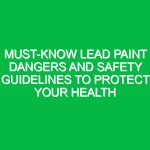“`html
Essential Lessons: Learning From Past Incidents to Improve Safety
Good morning team,
Today, we’re going to dive into a crucial topic: Essential Lessons: Learning From Past Incidents to Improve Safety. Understanding the lessons from previous incidents can significantly improve our safety practices and create a safer workplace for everyone. By learning from the past, we not only honor those affected by these incidents but also empower ourselves to prevent future occurrences.
Understanding Essential Lessons in Workplace Safety
Essential lessons are insights gained from past incidents that highlight the importance of safety in our daily operations. These lessons emphasize the need for continuous improvement in our safety protocols and practices. When we take the time to analyze incidents that have occurred, we can uncover valuable information that can help prevent similar events in the future. Unfortunately, many employees may underestimate the impact of these lessons, believing that accidents only happen to others.
Key Hazards, Risks, and Safety Considerations
When we discuss essential lessons in safety, we need to identify specific hazards and risks associated with our work environment. Here are some common hazards that can lead to incidents:
- Slips, Trips, and Falls: These are among the most common workplace accidents, often resulting in serious injuries.
- Machine-related Injuries: Improper use or lack of Maintenance of machinery can lead to severe injuries.
- Chemical Exposure: Working with hazardous materials without proper Safety Gear can result in long-term health issues.
- Ergonomic Risks: Poor workstation design can lead to musculoskeletal disorders over time.
Ignoring safety protocols can have real-world consequences, including injuries, increased insurance costs, and even legal actions. These outcomes not only affect the individuals involved but also impact our overall workplace morale and productivity.
Best Practices, Procedures, & Actionable Advice
To prevent incidents and ensure safety, we need to adopt Best Practices and follow established safety Procedures. Here are some actionable steps:
1. Conduct Regular Safety Training
Regular training sessions ensure that everyone is aware of the hazards and knows how to mitigate them. Use real-life incidents as case studies to illustrate the importance of adhering to safety protocols.
2. Implement Safety Checklists
Utilize safety checklists tailored to specific tasks. This simple tool can help identify potential hazards before they become an issue.
3. Encourage Reporting of Near Misses
Encourage employees to report near misses without fear of repercussions. Often, these incidents provide critical insights that can help improve safety.
4. Use Personal Protective Equipment (PPE)
Ensure that employees are equipped with and wear appropriate PPE at all times. This includes helmets, gloves, goggles, and other necessary gear depending on the task.
5. Foster a Safety Culture
Creating an environment where safety is prioritized will encourage employees to focus on Safe Practices. This can be achieved through positive reinforcement and by leading by example.
Case Studies: Learning from Real Incidents
Let’s take a look at a couple of real-world incidents to understand the importance of learning from the past:
Case Study 1: The Slip and Fall Incident
In one case, an employee slipped on a wet floor that had not been marked with warning signs. The incident resulted in a broken leg, leading to a lengthy recovery period. After this incident, management implemented stricter protocols for cleaning spills and ensuring proper signage was always in place.
Case Study 2: Machine Malfunction
Another incident involved a worker who suffered an injury due to a malfunctioning piece of machinery. The investigation revealed that the equipment had not been properly maintained. Following this incident, routine maintenance checks were established, and employees were trained on how to identify early warning signs of machine failure.
Regulations, Standards, and Compliance
Understanding and adhering to safety Regulations is essential for protecting employees. Relevant Standards such as those set by OSHA (Occupational Safety and Health Administration) and ISO (International Organization for Standardization) provide guidelines that help maintain Workplace Safety. Compliance with these regulations not only protects employees but also the organization from legal liabilities and enhances its reputation.
Employee Engagement & Discussion
Now that we’ve discussed the importance of learning from past incidents, I’d like to open the floor for discussion. Here are a few questions to consider:
- What safety challenges have you encountered in your work that relate to past incidents?
- How can we improve our safety protocols based on what we’ve learned from previous events?
- Have you ever witnessed a near-miss situation? What actions were taken afterward?
Your insights are invaluable, and together we can create a safer workplace.
Conclusion & Key Takeaways
In conclusion, learning from past incidents is not just about avoiding mistakes; it’s about fostering a culture of safety and continuous improvement. Remember the following key points:
- Understand the key hazards in your workplace.
- Always adhere to established safety protocols and Best Practices.
- Encourage open discussions about safety and near misses.
- Stay informed about compliance regulations and standards.
Thank you for your attention today. Let’s commit to applying these essential lessons in our daily work to ensure a safer environment for everyone. Prioritize safety, and together we can make a difference!
“`


